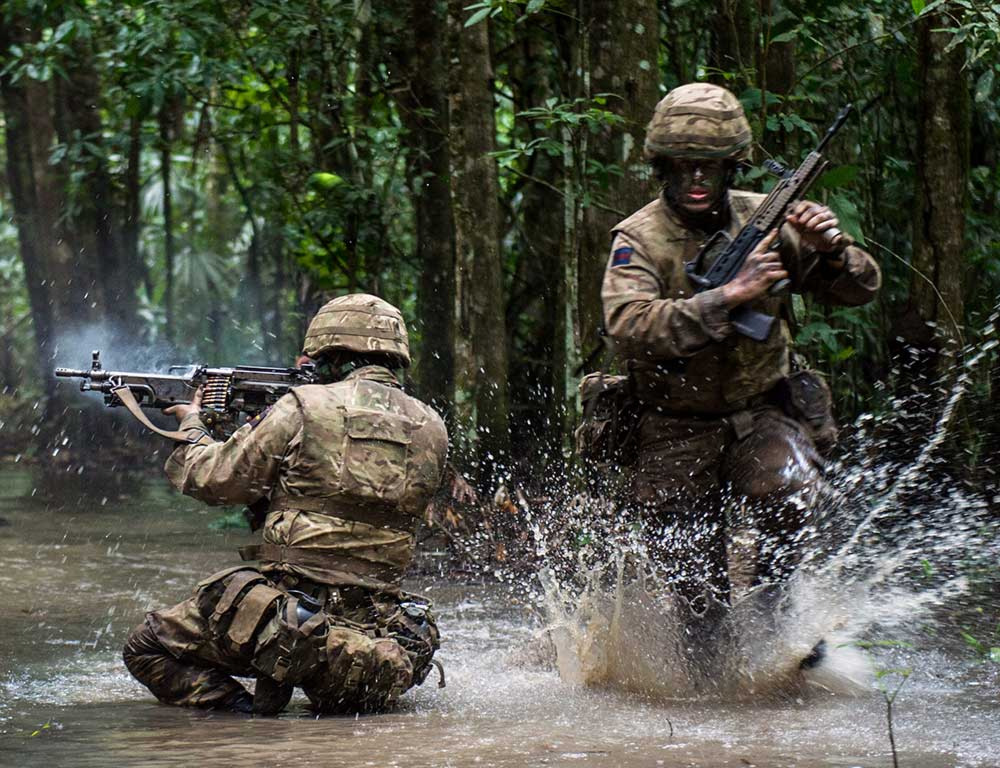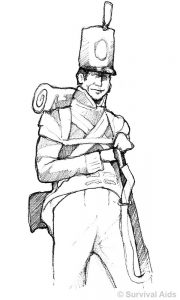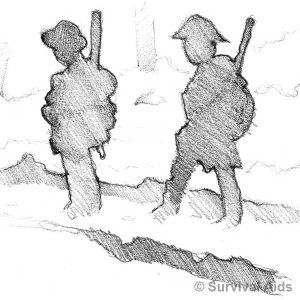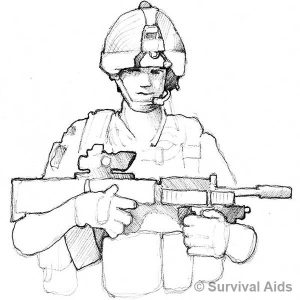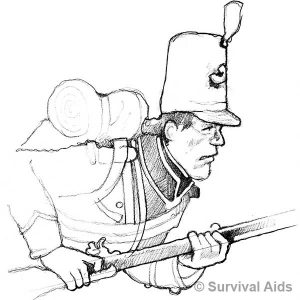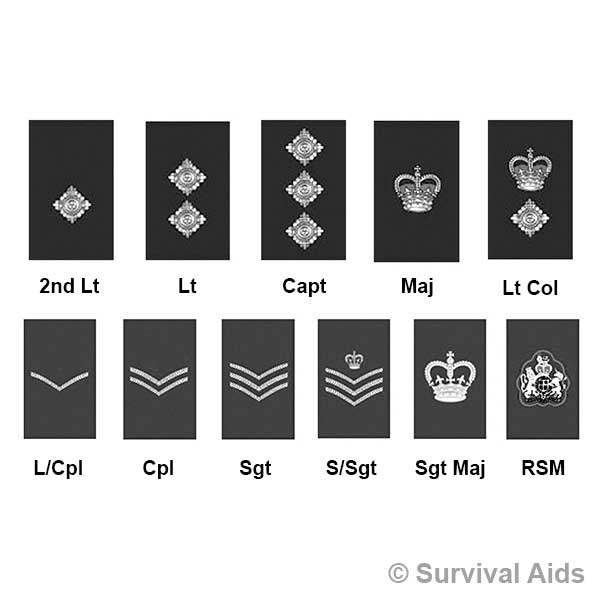WHAT’S THE SOLDIERS POCKET BOOK ALL ABOUT?
The Soldiers Pocket Book is all about keeping us at the top of our game it doesn’t presume to replace basic training, but is a reminder of the fundamentals that, unless practised regularly, can and do fade. It is also a pocket sized, take anywhere guide to shooting, first aid, personal security, vehicles, fieldcraft, weapons and more. What’s the range of the GMG? Why do we wear berets?
Our military careers start with a good grounding in the basics, that tests the recruit in arduous, realistic, stressful conditions. Nothing can replace experienced instructors, and you can’t learn the bond of friendship and loyalty that you form with those you serve, from an A6 book. But you can refer to this book throughout your military career.
Napol Tommy Soldier
BRITISH SOLDIERS
The British Soldier is a volunteer who elects to serve in the British Army he/she follows in a long line of tradition and service to the crown. He/she agrees to serve Her Majesty The Queen and her elected Officers.
The well-deserved reputation for excellence, that the British Army enjoys the world over, is due to the initial training, the personal qualities that he/she already had which the training enhances, and the additional training he/she receives throughout his/her career, which is both relevant and testing. Confidence, conviction and self respect blossom with ability.
All three services have strong, well loved historical legacies, made up of Battle Honours and individual acts of gallantry, which go to form their traditions, ethos, and their professional foundation.
Outside the Armed Services the trend for tradition is increasingly seen as old fashioned and unnecessary, we are propelled along the road by breathtaking advances in technology, that make our lives easier, quicker, slicker, less messy, but not necessarily more fulfilling or satisfying.
However, we owe it to our predecessors to carry on the fine traditions of our Regiments and Corps. We can do this by being fit, well trained, motivated, capable soldiers, sailors and airman, be it Regular or Reservist, progressing through the ranks and passing on our experience to the youngsters following on behind us who will carry the legacy on.
ROBUSTNESS
Things very rarely go to plan therefore, to be able to deal with life's ups and downs, we need to develop a practical, robust and sturdy outlook on life. Through no fault of our own, we are no longer as tough or as robust as our predecessors, life has become easier and easier, we expect everything instantly, and complain when it doesn’t arrive. We have forgotten how to be patient, and then sue because we’re told that we are “victims” of some wrong doing by some bloke on the telly. Unfortunately, our enemies appear to be just as robust and strong as they have always been.
RESPECT
Much is slowly going wrong within our society, there seems to be little respect for anything, including the law. We expect to be able to do what we want, drop rubbish on the street and have someone pick it up for us, avoid paying tax, we expect everything instantly, want it for nothing and want it now.
The Army is an island of discipline and order, that few outside of it understand. It is not a coincidence that we often hear people harking back to the days of conscription as the golden days of discipline for the young.
Modernday Tommy
It is essential for the future effectiveness of the Army that we maintain these high standards and discipline. As soldiers we carry out a unique role in society, we are part of society, are drawn from it, we live amongst the rest of the population. Yet are detached, we don’t have normal jobs, we are asked to do extraordinary things, regularly, and then to deal with it and move seamlessly back into society. Ex-soldiers are known for their cool, calm approach to a crisis, and not “sweating the small stuff”. Relying on our comrades wholeheartedly is part of this confidence. And we must ensure that we retain and nurture this solid base of trust on which we all rely.
VALUES / STANDARDS OF THE ARMY:
Selfless Commitment: to put others before yourself.
Courage: in the face of the enemy and in the Para door, but also moral courage to do the right thing, standing up to bullies.
Discipline: maintain high standards yourself so that others can rely on you.
Integrity: earn the respect and trust of your comrades.
Loyalty: to be faithful to your comrades and your duty.
Respect for others: to treat others decently all the time.
THE BRITISH ARMY OATH OF ALLEGIANCE
“I (Soldiers name) swear by almighty God that I will be faithful and bear true allegiance to Her Majesty Queen Elizabeth the Second, Her heirs and successors and that I will as in duty bound honestly and faithfully defend Her Majesty, Her heirs and successors in Person, Crown and dignity against all enemies and will observe and obey all orders of Her Majesty, Her heirs and successors and of the Generals and Officers set over me.”
So how did the British Army come into being in it’s present form? From 1645 and the New Model Army to the War on Terror in a few pages! Here it is in brief.
INCEPTION OF BRITISH ARMY
In 1645 the New Model Army was created by the Parliamentarians during the English Civil War. For the first time in British military history, soldiers became professionals rather than militias called upon when needed.
THE NAPOLEONIC ERA –
The first intercontinental war The Napoleonic Wars saw the British Army being bolstered to levels never before seen. In 1793 Britain had a professional army of some 40,000 – by 1813, on the eve of Napoleon’s defeat, the size had risen to 250,000.
1793 Napol Soldier
During these wars Riflemen – made infamous by Bernard Cornwell’s Sharpe novels - were created as a skirmishing force to harass the massed French ranks and to target French officers – a tactic seemed as ‘damned ungentlemanly’ by most regular forces. The Rifleman tradition continues with modern Rifles Battalions in today’s army which trace their lineage back to their Napoleonic forefathers.
“Did you know?” The reason why the British Army used to wear red tunics on the battlefield was as an early means of camouflage. This may sound ridiculous but it was found, at a distance, ranks of men wearing red are harder to count as it blends into a single blur of colour thus deceiving enemy spotters.
COLONIAL RULE:
During the years of Victoria’s reign the creation of breech loading rifles gave soldiers the opportunity to take cover and to no longer simply ‘take it’ whilst standing in ranks.
“Did you know?” The Victoria Cross was introduced in 1856 and to date only 1,356 have been awarded including three VCs and Bar – (Bar means:- the award of the medal to the same recipient twice).
The British Army eventually adopted the khaki uniform during the Boer War when the red tunics created easy targets for Boer skirmishing units called Kommandos. This is where we get the term Commando from for shock, direct action troops – much like their Boer predecessors.
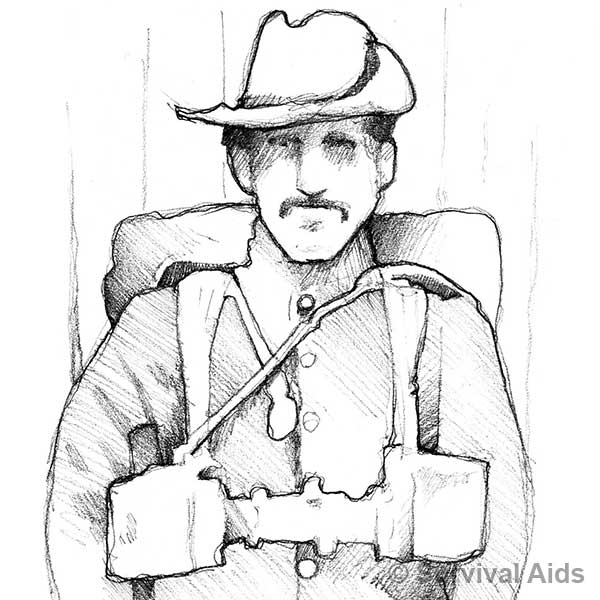
Boer War Soldier
“Did you know?” That officers could buy their commissions into the British Army up until 1871.
THE FIRST WORLD WAR – The End of Innocence
The First World War brought an end to eighteenth-century military tactics and the gentlemanly conduct of previous centuries. The British Army was sent into an industrial war in which the enemy had the same technology – Victorian colonial supremacy was over.
The British Army suffered 60,000 casualties on the first day alone at the Battle of the Somme. Men were ordered to walk towards the enemy for fear that running would create a breakdown in discipline.
“Did you know?” That during the Battle of the Somme General Rawlinson held a regiment of Lancers – a unit more akin to galloping across the fields of Waterloo than the quagmire of the Somme – in reserve with the romantic ambition to use such a force to ride through the German lines.
The carnage of war meant that tactics were dramatically changed. Towards the end of the war, artillery began to be used in conjunction with the advance of the infantry and could be called upon to pound areas of enemy resistance, for the first time creating what has been dubbed as the “Creeping Barrage.” More powers for NCOs to use their own initiative during battles meant that combat became faster paced as opportunities were seized upon rather than waiting for the approval of officers. The tank was first used at the Battle of Flers in September 1916 as a means of breaching the deadlock of trench warfare.
By 1918 the British High Command had realised the potential of utilising the infantry, the artillery and the armoured aspects of the army to augment each other. By 1939 the pace of war had changed irreversibly.
SECOND WORLD WAR – Speed and Armour
The horrors of trench warfare had a deep psychological impact. Both sides during the Second World War were keen to avoid a repeat of such a war of attrition.
Germany’s Blitzkreig campaign in Poland, the Low Countries and France in 1939-1940 brought about a new kind of warfare, one which saw speed as vital as technology. Gone were the days of massed armies forming up for weeks waiting for an offensive in one sector. Armoured spearheads and airborne assaults meant that defenders were constantly playing catch up.
Shock troops became prevalent in this war of speed and the British Army was keen to follow suit. Regiments such as the Special Air Service, the Parachute Regiment and Commandos were all formed on the premise of taking the fight to the enemy – in the words of Churchill “to set Europe ablaze.” Did you know? That Operation Market Garden – the operation made famous by the film A Bridge Too Far - remains the largest ever airborne assault, totalling 41,628 paratroopers and gliderborne forces.
THE COLD WAR
After 1945, Britain became one of the constituent powers of NATO and as such the British Army became embroiled in the Cold War; in case it ever went hot.
“Did you know?” That the Korean War (1950-53) – often seen as a forgotten war – cost the lives of 1,109 British service personnel.
However, the 1957 Defence White Paper and the creation of nuclear weapons meant that the sizable British Army of old could no longer be sustained. Amalgamations of units and regiments became the order of the day as successive governments attempted to cut military costs.
THE WAR ON TERROR - The Present, the Future
The events of Sept 11th 2001 changed the focus of the British Army, we spent over a decade campaigning, but the campaigns in Iraq and Afghanistan are behind us now. Today our nation is facing a new threat and we must and will adapt to meet it. The Arab spring set off a chain of events that have led to several Arab countries plunging into anarchy and war. These failed states are now haemorrhaging brutalised and radicalised fighting age males that are heading home with hatred and murder on their minds. “Je Suis Charlie” (Ebdo), Paris and Brussels have now taken the place of Ground Zero and Twin Towers on our lips.
The days of set piece battles between armies have seen their twilight.
Even in this time of cuts and uncertainty, the British Army will undoubtedly remain the foremost professional army in the world now and for years to come. It has a tradition we should be rightly proud of and the men and women who serve continue to be of the highest calibre, thus ensuring the values, customs and effectiveness of the British Army will endure well into the future.
TRADITIONS OF THE BRITISH ARMY
Why do we have regiments?
In the British Army the regimental level is seen as the constant unit. Anything above this level, such as divisions and battle groups, are often deployed depending on operational requirements. For instance when 16 Air Assault Brigade deployed to Afghanistan in 2010 it encompassed two battalions of the Parachute Regiment, two battalions of the Royal Regiment of Scotland, 16 Medical Regiment, the Household Cavalry, 23 Engineer Regiment and the Royal Irish Regiment.
“Did you know?” The oldest regiment to remain in constant existence is the Honourable Artillery Company, formed in 1537.
“Did you know?” Regiments until the 18th Century had originally been named after their commanding officer at the time. Owing to the confusion this created when COs came and went in quick succession, in 1751 a numerical system was implemented. Sir Edward Dering’s Regiment of Foot became the 24th Regiment of Foot – men of this regiment later rose to prominence defending Rorke’s Drift in 1879 - an action made famous by the film Zulu.
WHY DO REGIMENTS HAVE COLOURS?
During the heat of battle, Colours would often be seen as rallying points. Colours were embroidered with the battle honours and thus were symbols of great regimental pride. As such they were to be guarded to the death as their loss was seen as a personal insult to the monarch. Lieutenant T. Melville courageously fought, singlehandedly, to recover the Queen’s Colours at the Battle of Isandhlwana in 1879 once they had been seized by Zulu forces.
“Did you know?” The rank of Colour Sergeant was created during the Napoleonic Wars to protect the Ensigns who carried the Colours into battle. Those promoted to Colour Sergeant were done so on merit and were rewarded for their loyalty and bravery already displayed in combat.
WHY DO BRITISH REGIMENTS WEAR BERETS?
The beret was first introduced into the British Army in 1918. The British Tank Corps had been training alongside the French 70th Chasseurs Alpins (mountainous warfare specialists) who wore a distinctive large beret. Major-General Sir Hugh Elles, the first Commanding Officer of the Tanks Corps, saw the potential for the beret to be worn by his tank crews in the confined spaces which they worked in. A more reserved “British” style of beret was sent for His Majesty’s approval in November 1923, finally being incepted into the army in March 1924.
Berets unite members of the same regiment as a mark of distinction from others and develop a sense of pride for the unit in which soldiers serve.
During the Second World War many regiments wore their berets as a means of showing the enemy who they were up against. The term Red Devils, for instance came from a phrase the Germans coined when fighting against the tenacious Paras who wore their maroon lids into battle.
Berets are worn, traditionally with a slope to the right of the wearer.
The reasoning behind this was to keep the right shoulder free from any obstructions when the soldier’s rifle was placed in the slung position. This all dates from the time when the standard army rifle was the Lee Enfield, a weapon considerably longer than the modern SA80 bullpup design.
“Did you know?” There are no official regulations for the moulding or shaping of a beret. Style comes down to individual preference, Regimental mannerisms or whatever looks most “Warry”!
The British Army has always expanded and contracted to meet the threats the nation faces, and to suit the various theatres of operation, and this continues today with more emphasis being placed on the flexible nature of our Reserve Forces.
BADGES OF RANK
SUPPORT AGENCIES/CHARITIES HELP FOR HEROES
Help for Heroes (H4H) has raised over £100m since its launch in October 2007. All the funds raised to date have been either allocated or spent on the direct, practical support for the men and women who have been wounded, injured or become sick while in the service for our country.
To date, H4H has funded a variety of projects including the £8m Rehabilitation Complex at Headley Court, a new £3.5m treatment centre for Combat Stress, adaptive adventure training through the Battle Back programme and the creation of a £6m Quick Reaction Fund to support individuals in need.
Help for Heroes are working in partnership with the MOD and The Royal British Legion, to deliver the Defence Recovery Capability (DRC) – a comprehensive pathway to help wounded, injured and sick personnel launch back into the next phase of their lives. H4H have committed £90m to the Defence Recovery Capability, part of which includes the creation of five regional Personnel Recovery Centres, in Colchester, Catterick, Tidworth, Plymouth and Edinburgh, that provide on-going training and support for the wounded after Headley Court.
Bryn Parry OBE, CEO & co-founder, Help for Heroes states “H4H accepts that men and women injured in war may eventually have to leave their job of choice but is entirely focused on ensuring that if that has to happen, those individuals only do so when they are ready, have the very best opportunities and the long term care they need; they deserve nothing less.”
THE ARMY BENEVOLENT FUND
The Soldiers’ Charity. We give lifetime support to serving and retired soldiers and their families. They risk so much for us, but for them, it’s just doing their job.
In return, we provide financial assistance when they are in real need. We have seen a 30% rise over the past two years in applications from soldiers who have taken part in previous and current conflicts and we currently raise £7 million a year to meet this need.
As a result of Current Operations, it is anticipated that the requests for assistance will rise significantly in the coming years. It is the aim of The Soldiers’ Charity to increase fundraising to £14 million a year by 2015 to be sure that we can help each and every soldier that needs our help.
COMBAT STRESS
Combat Stress is the UK’s leading military charity specialising in the care of Veterans’ mental health.
A small, but significant, number of Veterans leave the Armed Forces with severe psychological wounds. This can lead to depression, phobias, anxiety, relationship problems, and in some cases Post Traumatic Stress Disorder (PTSD).
Combat Stress provides effective treatment and support to Veterans of the British Armed Forces who are suffering from mental ill health. All of our services are free of charge to the Veteran. www.combatstress.org.uk
THE ROYAL BRITISH LEGION
As the nation’s leading welfare charity we provide practical care and support for service personnel and their dependents in both military and civilian life.
Legion membership honours the commitment of our armed forces and champions the wellbeing of all those - past and present - who have served their country.
Make a difference. Join today: www.britishlegion.org.uk/join
AFGHAN HEROES
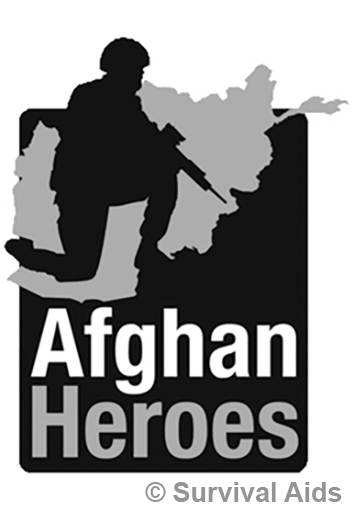
Afghan Heroes was launched by mothers who all suffered the tragic loss of their sons in Helmand Province, Afghanistan in July 2009 within 24 hours of each other. Initially branded as a “mothers legacy” Afghan Heroes is now a legacy to all the fallen soldiers in Afghanistan from 2001.
- - In the provision of support to the families of the fallen
- - In recognition of the bravery of our front line forces operating in theatre
- - Through the welfare of our wounded troops
- - Assistance and support to our returning forces
- - Our ultimate objective is to provide post services facility to foster
Mission:
To support all our service personnel operating in theatre in Afghanistan. To provide the much needed “home comfort“ supplies and gifts to those service personnel. To promote and embrace a new initiative “thank the troops” to ensure our soldiers know they are not alone.
On the home-front:
Support groups for the families of the fallen. Regional network groups. Charity events so they can come together.
Support for the Returning Troops:
With the intention of providing emotional, psychological help through support groups for all returning soldiers and families of the fallen.
- Help with vocational training, including IT equipment, computers and printers.
- Assisting other minor charities in their work.
- Creating a lasting legacy in support of our operations in Afghanistan.
THE SOLDIERS’ CHARITY
“The Soldiers’ Charity is the Army’s national charity. We are here to help those in the Army family who have been prepared to risk everything for us when they or their family needs them most.
We give a lifetime of support to soldiers, former soldiers and their families whatever the circumstance, whatever the age, whatever the rank - our support and commitment to soldiers is never ending. We aim to make grant payments within 48 hours of receipt of application, making a significant difference at a critical point in many lives.
We support the Army family by giving grants to individuals and other specialist charities that help soldiers, former soldiers and their families and we work with veterans from every conflict since the Second World War, including those from recent conflicts in Iraq and Afghanistan. We have seen a 30% rise over the past two years in applications from soldiers who have taken part in recent and current conflicts and we currently raise £7 million a year to meet this need.
As a result of current operations, we anticipate that the requests for assistance will rise significantly in the coming years. Our aim is to increase our fundraising to £14 million a year by 2015 to ensure that we reach each and every soldier that needs our help.”
www.soldierscharity.org
This content is from the Soldiers Pocket Book.




